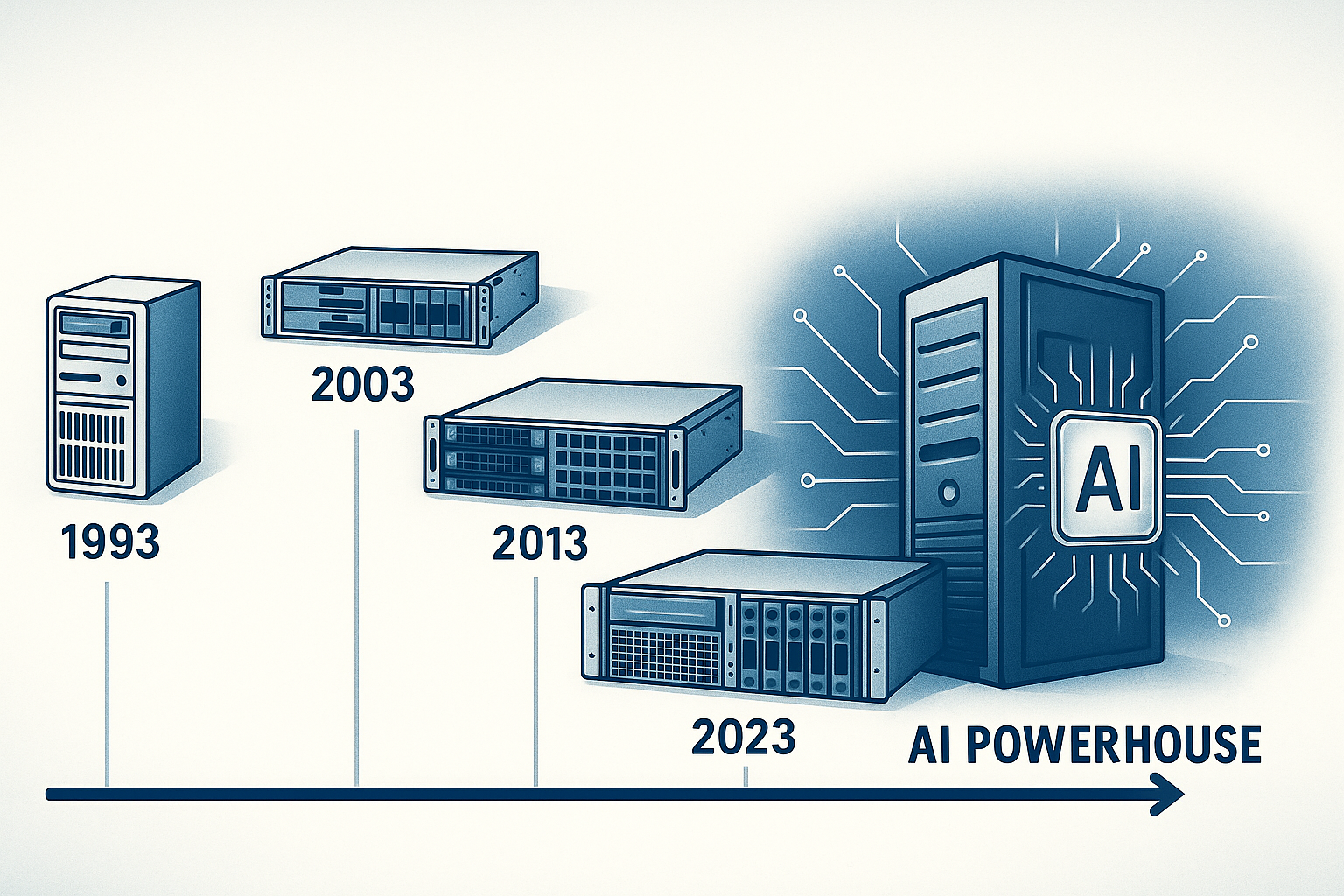
From Startup to AI Backbone: The History of Super Micro Computer (NASDAQ: SMCI)
When discussing the giants of data center infrastructure and the hardware powering today’s AI revolution, most headlines focus on big names like NVIDIA (NASDAQ: NVDA), Dell Technologies (NYSE: DELL), or Hewlett Packard Enterprise (NYSE: HPE). Yet, quietly and methodically, Super Micro Computer has risen from humble beginnings to become an indispensable player in the global server and data center ecosystem. The story of Supermicro is one of relentless engineering, adaptation, and an uncanny ability to ride the waves of technological change.
Silicon Valley Roots: The Birth of Supermicro
Super Micro Computer, Inc. was founded in 1993 by Charles Liang, a visionary engineer who immigrated from Taiwan to the United States with the dream of building innovative computing hardware. With its first headquarters in San Jose, California, the company—often simply called Supermicro—began by focusing on what many considered a niche market: server motherboards.
Charles Liang’s approach was straightforward but highly effective: build modular, customizable, and high-performance server hardware at a competitive price point. In the 1990s, most large companies offered servers as “black boxes”—rigid, expensive, and difficult to tailor for specific use cases. Supermicro, on the other hand, targeted value-added resellers, small system builders, and businesses seeking flexibility and cost efficiency.
1990s-2000s: From Niche Player to Industry Contender
Throughout the late 1990s and early 2000s, Supermicro steadily expanded its product line. The company’s focus on reliability, customization, and rapid time-to-market won over a growing legion of loyal customers in web hosting, early cloud computing, and enterprise IT. Supermicro began to develop not only server motherboards but also complete server systems, storage solutions, and rackmount hardware.
As the internet economy blossomed, Supermicro’s ability to quickly adopt the latest CPUs from Intel (NASDAQ: INTC) and AMD (NASDAQ: AMD)—and translate those advances into new products—became a significant advantage. The company was known for its agility, introducing new server designs within weeks of new processor releases, while larger rivals took months.
2007: Going Public and Global Expansion
A milestone in Supermicro’s history arrived in March 2007, when it debuted on the NASDAQ exchange under the ticker symbol (NASDAQ: SMCI). The IPO raised the company’s profile and provided essential capital for expanding manufacturing and R&D. With newfound resources, Supermicro opened new facilities in the U.S., Taiwan, and the Netherlands, establishing a global footprint that enabled faster delivery to major cloud, enterprise, and data center customers.
Navigating Challenges and Controversies
The years following the IPO were not without turbulence. The server market became fiercely competitive, and margins were often razor-thin. Supermicro was forced to compete not only on cost but also on innovation and scale, as cloud giants began to demand custom, energy-efficient, and increasingly powerful servers.
A major controversy erupted in 2018 when Bloomberg Businessweek published a now-discredited report alleging that Chinese agents had secretly inserted spy chips into Supermicro motherboards. The report sent shockwaves through the tech industry, given Supermicro’s role as a supplier to Apple (NASDAQ: AAPL), Amazon (NASDAQ: AMZN), and major government agencies. All parties—including (NASDAQ: SMCI) itself—categorically denied the allegations, and multiple independent audits found no evidence of tampering. The episode nevertheless illustrated the strategic importance of Supermicro’s hardware in the global tech supply chain.
The AI Era: Seizing the Next Wave
As the 2010s gave way to the 2020s, a new era of computing began to unfold. Artificial intelligence and machine learning workloads placed unprecedented demands on data centers. To train massive AI models, companies required servers packed with the latest GPUs and designed for maximum cooling, scalability, and efficiency.
Supermicro seized the moment. Drawing on its expertise in rapid product development and customization, the company became a leading provider of GPU-optimized servers, high-density clusters, and modular data center solutions. Supermicro’s engineering teams worked closely with NVIDIA, Intel, and AMD to deliver systems that could meet the needs of the world’s largest AI research labs, hyperscale cloud providers, and enterprise innovators.
Supermicro’s “Building Block Solutions”—modular server components designed to be rapidly mixed and matched—enabled it to respond quickly to surging customer demand, especially during the COVID-19 pandemic and subsequent supply chain disruptions. This flexibility became a key advantage as cloud and AI infrastructure spending exploded.
Financial Growth and Industry Impact
Today, Supermicro serves a diverse roster of customers ranging from startups to Fortune 500 enterprises and government agencies. The company’s revenues have surged as demand for AI servers, storage, and networking gear has soared. Its manufacturing facilities in Silicon Valley and Taiwan are running near capacity, and new partnerships with hyperscalers have positioned the company for continued growth.
Industry analysts credit Supermicro’s unique combination of engineering prowess, supply chain flexibility, and willingness to serve both niche and large-scale markets as core reasons for its enduring success. While competitors often prioritize high-volume, standardized systems, Supermicro’s willingness to tackle specialized, high-performance projects has created a loyal customer base.
Looking Ahead
Supermicro’s journey is a testament to the value of adaptability and deep engineering focus. As AI, cloud computing, and edge data centers continue to reshape the digital landscape, Supermicro’s role as a key enabler seems only set to grow. The company’s founder, Charles Liang, remains at the helm, steering the organization into new frontiers—including “green” data centers and ultra-high-performance AI clusters.
For investors and industry watchers, the story of Super Micro Computer is far from over. From its roots as a niche motherboard maker to its current position at the heart of the world’s most advanced computing infrastructure, Supermicro continues to prove that sometimes, the most transformative tech stories happen outside the brightest spotlight.
Disclaimer: This article is for informational purposes only and does not constitute financial advice. Please consult a licensed financial advisor or conduct your own due diligence before making investment decisions.






